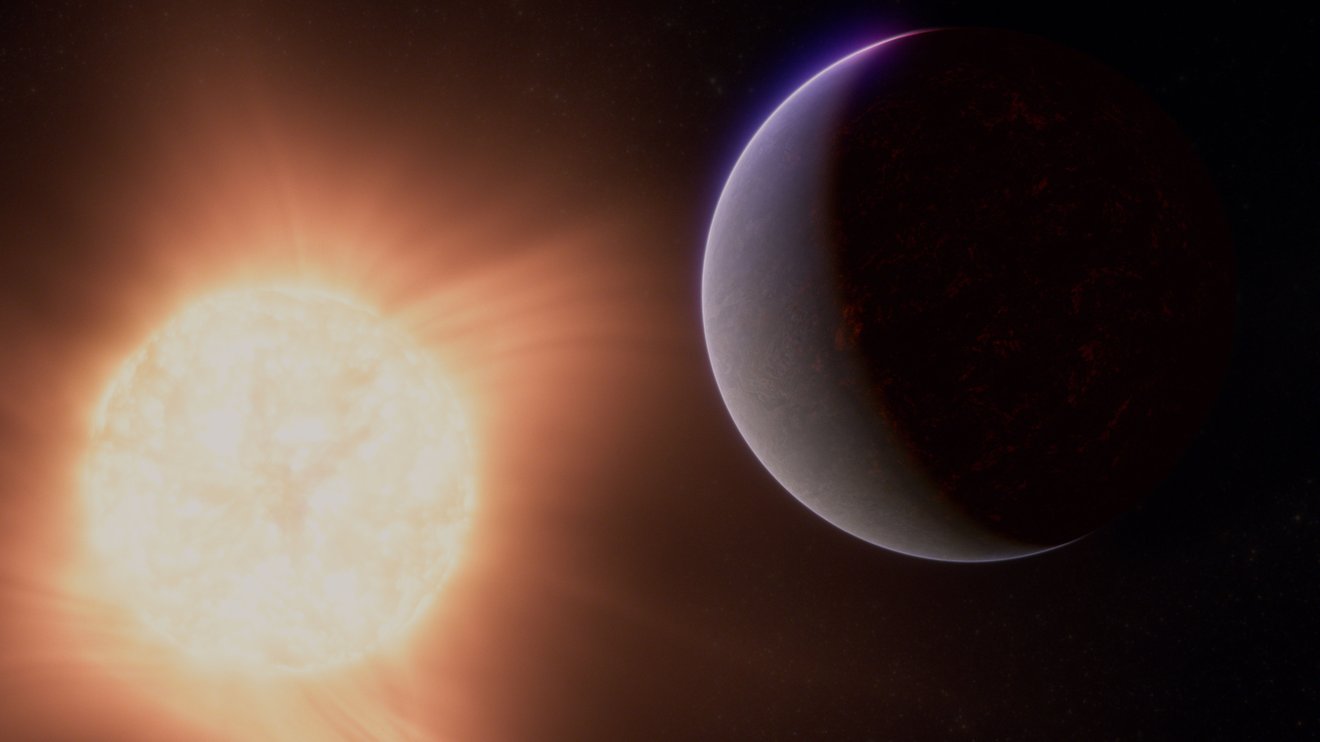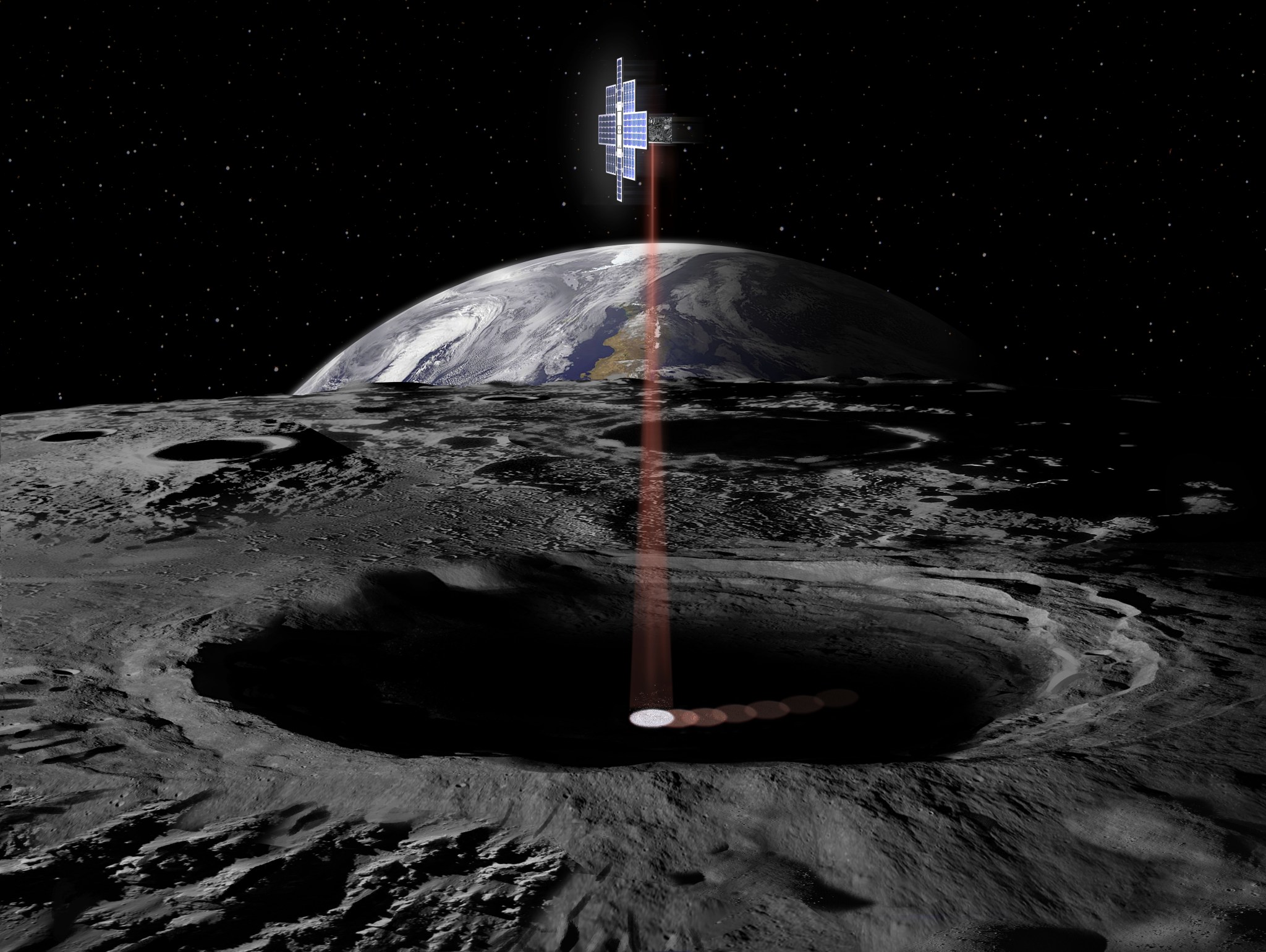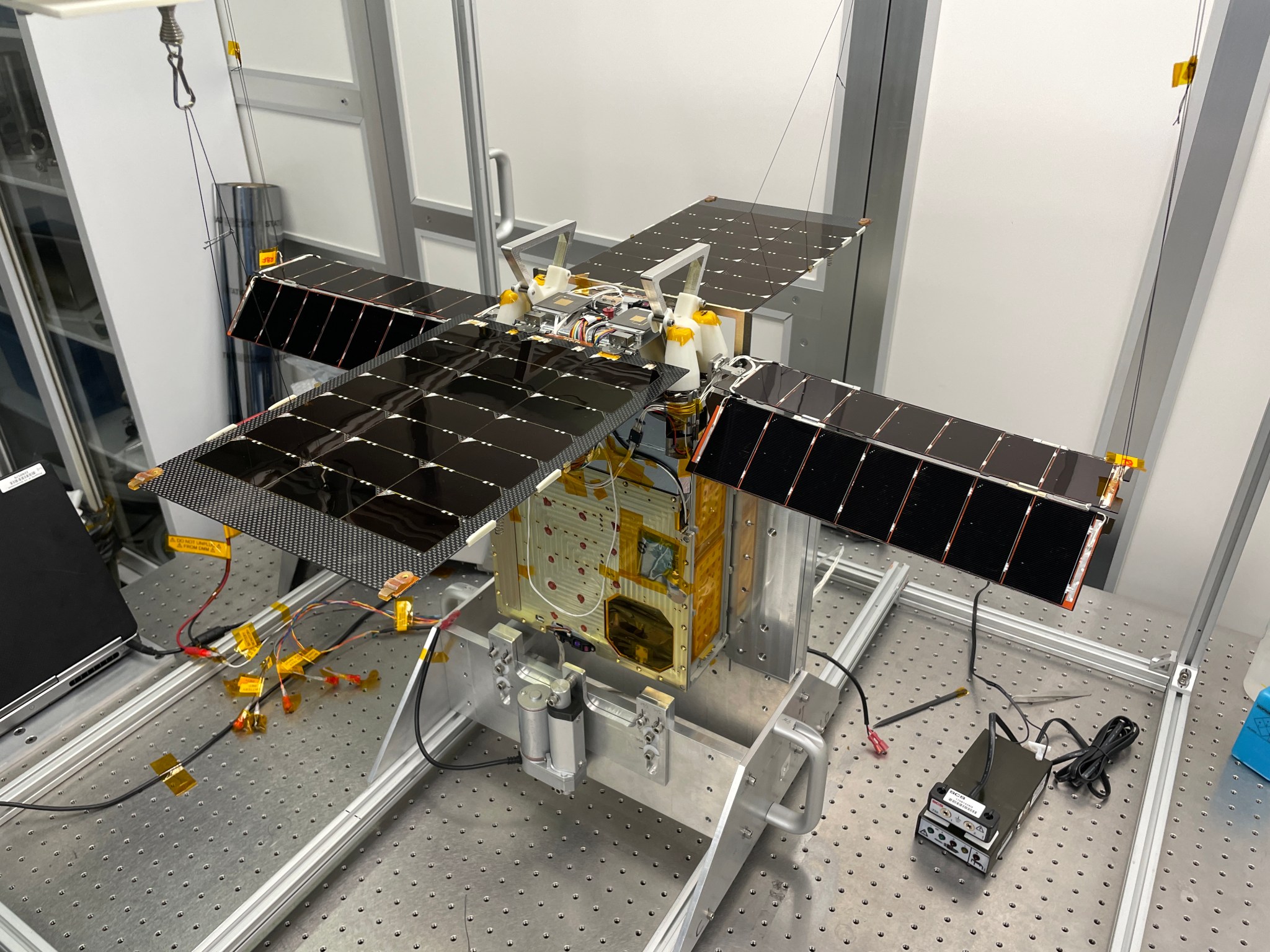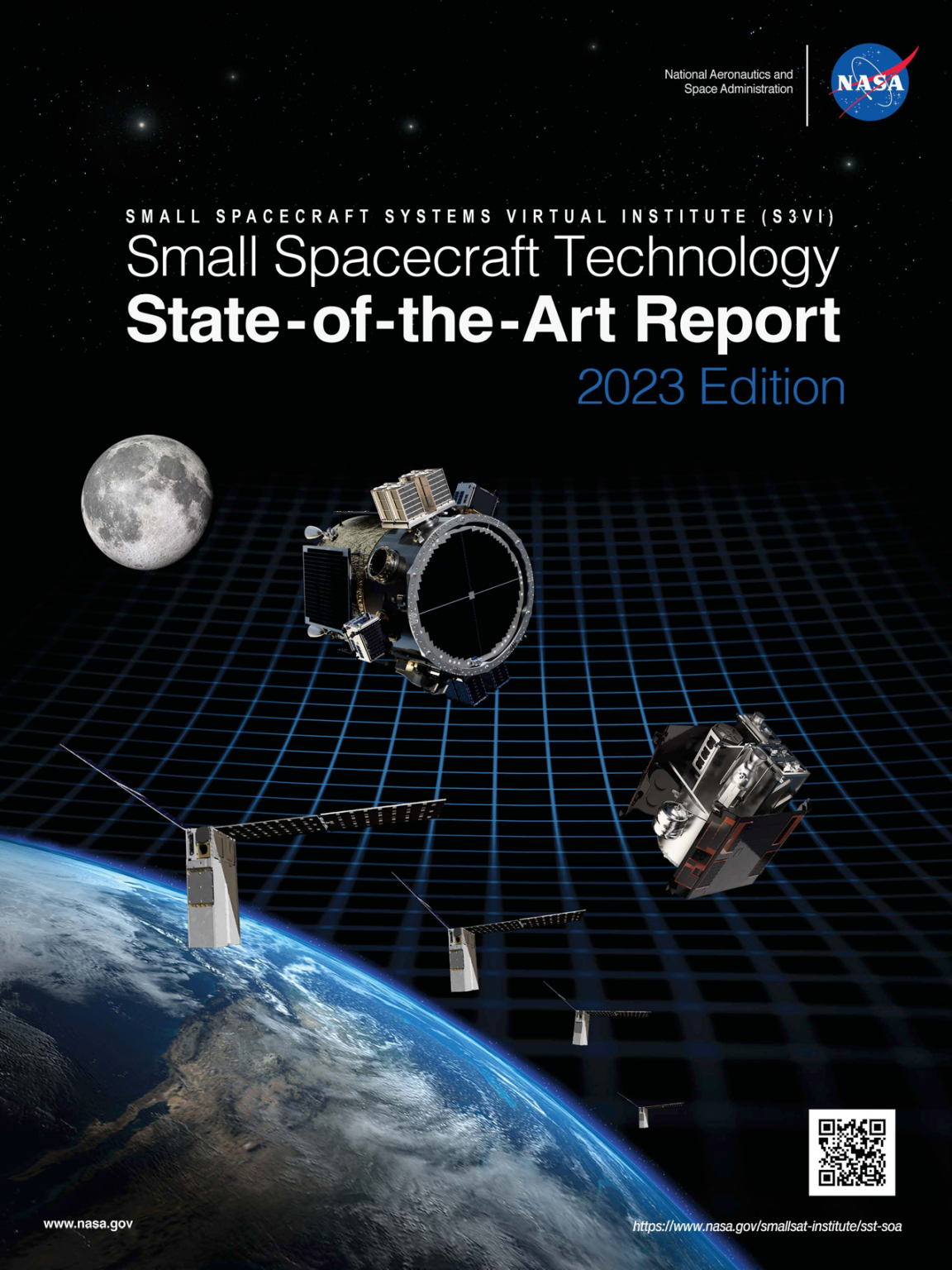Update May 11, 2023: While the CubeSat couldn’t reach the lunar South Pole to help seek ice, it fulfilled several technology goals that will empower future missions for the benefit of humanity.
NASA’s Lunar Flashlight launched on Dec. 11, 2022, to demonstrate several new technologies, with an ultimate goal to seek out surface ice in the permanently shadowed craters of the Moon’s South Pole. Since then, the briefcase-size satellite’s miniaturized propulsion system – the first of its kind ever flown – proved unable to generate enough thrust to get into lunar orbit, despite months of effort by the operations team. Because the CubeSat cannot complete maneuvers to stay in the Earth-Moon system, NASA has called an end to the mission.
Before Artemis astronauts land on the Moon, a small spacecraft called Lunar Flashlight, one of several planned missions to the Moon, will use lasers to help determine the presence and nature of water ice at the bottom of some of the Moon’s craters. The availability of water is an essential local resource for future crews to use for drinking water and fuel.
While in orbit around the Moon, Lunar Flashlight will use its lasers to survey for signs of water ice as it passes low over regions of the lunar South Pole that are in permanent darkness. It will distinguish water ice from dry soil, called regolith, by observing whether light reflects off of the crater surfaces (indicating regolith) or is absorbed (indicating water ice deposits). Determining the availability of naturally occurring resources such as volatiles like water, carbon dioxide, and methane that may be frozen on the Moon is important for mission designers. Future missions could use local resources instead of transporting the entirety of materials to build and sustain remote human outposts.
Lunar Flashlight will be the first planetary spacecraft to use a “green” monopropellant, or a chemical propellant that does not require a separate oxidizer to burn, called Advanced Spacecraft Energetic Non-Toxic (ASCENT). ASCENT provides significantly enhanced performance at a lower level of toxicity than hydrazine, a conventional propellant. Lunar Flashlight will also be one of the first CubeSats to study the surface of the Moon – an important next step to demonstrate the capability and suitability of CubeSats as an adaptable platform for future exploration and science missions.
Additional Benefits of Lunar Flashlight
The Lunar Flashlight demonstration mission will contribute to major advances in miniaturized spacecraft technology for planetary exploration. A successful Lunar Flashlight mission, compounded with the success of the CubeSat missions launching on NASA’s Artemis 1 Moon mission, would demonstrate that small spacecraft are a viable solution for exploring the Moon and other parts of the solar system for a lower cost and development timeframe compared to missions with larger spacecraft. This has important implications for human space exploration, planetary science, heliophysics, and other fields of study.
This mission will not only further investigate the location and concentration of possible water ice, as suggested by earlier NASA projects such as the Moon Minerology Mapper, Clementine, Lunar Prospector, and the Lunar Reconnaissance Orbiter, but it will also enhance our understanding of the Moon’s environment. Lunar Flashlight’s survey of lunar volatiles may provide insight into the Moon’s evolution and interaction with its environment that includes exchanges with comets and asteroids – containing similar volatile substances – and the solar wind. The volatile deposits found in the permanently dark, cold craters on the Moon’s surface – called cold traps – could also hold information about the origin of water on Earth.
Mission Objectives
- Demonstrate active laser spectroscopy that could differentiate between surface water ice (or frost) and dry regolith on the Moon.
- Map the locations of exposed surface water ice near the Moon’s South Pole.
- Demonstrate “green” propulsion system technology for planetary missions using a low-toxicity propellant that is simpler to handle while providing higher performance than hydrazine.
- Expand the legacy of CubeSats to performing scientific study at the Moon.
Fast Facts
- Lunar Flashlight will be the first mission to use lasers to determine the presence of water ice on the Moon’s surface.
- Lunar Flashlight will carry four lasers operating at four different, near-infrared wavelengths to differentiate between water ice and regolith as it investigates regions of the Moon’s South Pole that are in permanent darkness.
- Lunar Flashlight is a six-unit (6U) CubeSat (about the size of two stacked cereal boxes) and weighs about 30 pounds.
- Lunar Flashlight launched on December 11 from Cape Canaveral Space Force Station in Florida.
Partners
- NASA’s Jet Propulsion Laboratory in Southern California is providing technological elements from predecessor systems as well as radiometer experience. JPL is the lead NASA center for the overall development of the mission.
- NASA’s Goddard Space Flight Center in Greenbelt, Maryland, is the measurement lead for Lunar Flashlight.
- NASA’s Small Spacecraft Technology program based at NASA’s Ames Research Center in Silicon Valley and within the Space Technology Mission Directorate funds the mission.
- NASA’s Marshall Space Flight Center in Huntsville, Alabama is working with the Georgia Institute of Technology in Atlanta to develop the propulsion subsystem.
- Georgia Institute of Technology in Atlanta, will integrate and test and operate the spacecraft.
- The University of California, Los Angeles serves as the ground data system location and is the affiliation of a science co-investigator.
- The Johns Hopkins Applied Physics Laboratory in Laurel, Maryland, and the University of Colorado Boulder are the affiliations of two additional science co-investigators.
Learn More
- TechPort Project Summary for NASA’s Lunar Flashlight technology demonstration.
- NASA’s Lunar Flashlight Team Assessing Spacecraft’s Propulsion System (Jan. 12, 2023)
- Small Spacecraft Will Scout Ice Formations on the Moon (Jan. 10, 2022)
- NASA CubeSat Will Shine a Laser Light on the Moon’s Darkest Craters (Apr. 27, 2020)
- NASA CubeSats Play Big Role in Lunar Exploration (Feb. 25, 2020)
- Lunar Flashlight Selected to Fly as Secondary Payload on Exploration Mission-1 (Feb. 2, 2016)
- What are SmallSats and CubeSats?
- NASA’s Artemis Program
For investigators:
- Payload Design for the Lunar Flashlight Mission
- JPL’s Lunar Flashlight Mission Page
- Investigators can explore funding opportunities with the Small Spacecraft Technology program online.
- For technical inquiries about Lunar Flashlight, contact: arc-sst@mail.nasa.gov
For news media:
Members of the news media interested in covering this topic should get in touch with the CubeSats media contact at NASA’s Jet Propulsion Laboratory, listed here.


































